How to Fix ‘Battle.net Error #2’ with Blizzard Games
The error ‘Battle.net Error #2‘ is typically encountered when some users attempt to join online sessions on games Blizzard games like Diablo 2, Word of Warcraft, Overwatch, or Starcraft after launching them via their proprietary Battle.Net launcher.
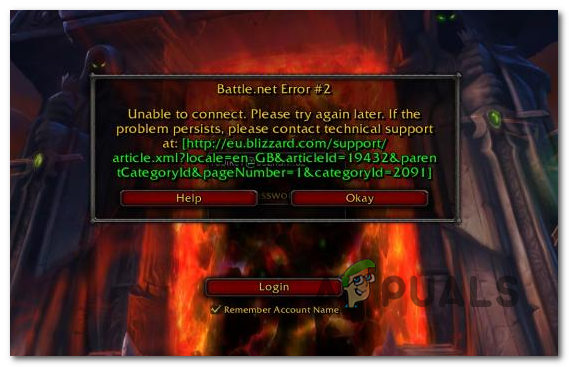
As it turns out, there are several different causes that might prompt the apparition of this particular error code. Here are a few potential culprits that might be responsible for the apparition of this particular issue:
- Blizzard Server issue – If you’re encountering the same error code when trying to launch multiple blizzard games, chances are they are currently dealing with a server issue. In this case, all you can do is confirm the server problems and wait for the developers to mitigate the problem.
- Servers are down for a particular region – It’s also possible that the server problem is only occurring for certain regions. You can test out this theory by logging out of your Battle.Net application and changing the server region before connecting again.
- 3rd party antivirus or firewall interference – If you’re using a 3rd party antivirus or firewall, it’s possible that some kind of false positive is actually causing the error code when you attempt to connect to the game server. In this case, you should be able to fix this problem by disabling or uninstalling your 3rd party security tool.
- File corruption inside your game files – Under certain circumstances, this problem can also occur due to a desync in the connection with the Battle.Net servers. In this case, you can get the issue resolved by using the built-in Scan & Repair function of Blizzard’s launcher.
Method 1: Checking the Status of Battle.Net servers
Before you engage in any other fix that might be capable of resolving this problem, you should start by making sure that you are not actually dealing with a server issue that is beyond your control. If multiple games released by Blizzard are currently affected by the same Battle.net Error #2, chances are they are currently dealing with a server outage or are in the middle of a maintenance period.
If you suspect this might be the case, start by checking if other people playing the same games as you are facing the same problems. You can use services like DownDetector or Outage.Report to search for the game that you’re having issues with (e.g. Overwatch, Starcraft, Word of Warcraft, Diablo 2, etc) and see if other users in your area are also encountering the same error code.
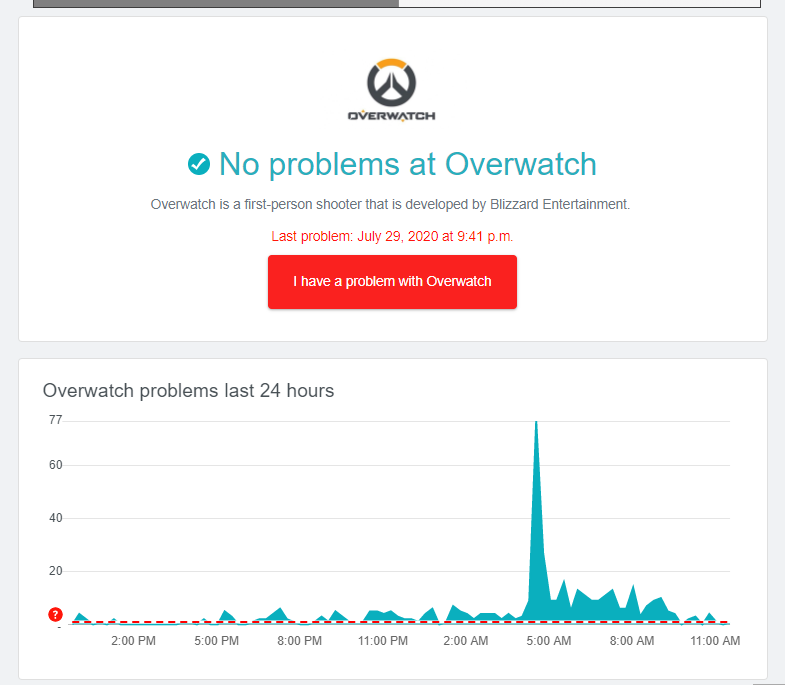
In case the investigation has revealed an issue with the game, you can check for any official announcements on the official Blizzard account that they used to post updates regarding game issues.
In the event that the investigations you’ve just performed didn’t reveal any server concerns, move directly to Method 3. On the other hand, if you have uncovered some server issues related to the game, follow Method 2 to try and circumvent the server problem by changing the game region.
Method 2: Switching the Region
If the investigations you performed above have revealed that Blizzard is currently dealing with some server issues in your area, there is one workaround that you might be able to use to circumvent the server problem while the issue is being worked on.
Several affected users encountering the same problem have reported that the issue was finally resolved after they logged out of their Battle.Net account and then changed the Region before logging in once again.
This quick workaround is super easy to perform and should be effective in circumventing the majority of server issues (regardless of the game) as long as the problem only affects a certain region.
If you want to perform this fix, follow the instructions below to resolve the ‘Battle.net Error #2′ error by forcing the Battle.Net app to connect to a different server:
- Open your Battle.Net application and click on the down arrow associated with your account name (top-right corner). Next, click on Log Out from the newly appeared context menu.
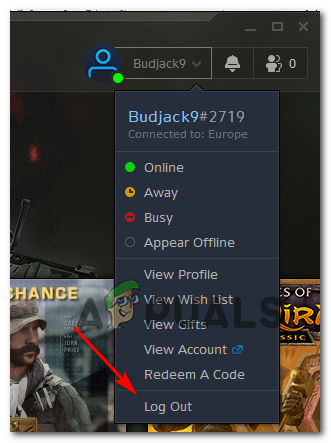
- Once you have successfully logged out of your Battle.Net account, you will be returned to the login screen.
- When you get there, click on the globe icon and select a different region that is not affected by the server issue.
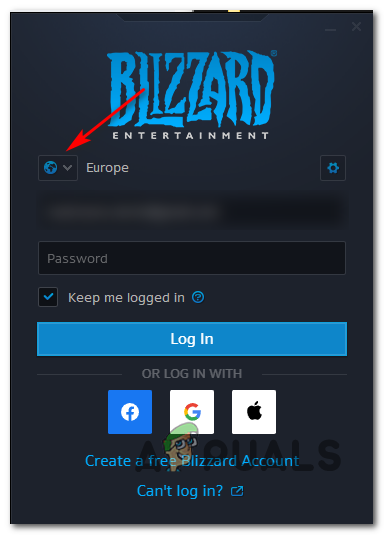
Changing the region of Battle.Net app - Once you have successfully changed your default region, insert your username and password once again and click on Log in button to sign back into the Battle.Net application.
- After you are signed back in, launch the game that was previously causing the Battle.net Error #2 and see if the problem is now resolved.
In case the same problem is still occurring, move down to the next potential fix below.
Method 3: Disabling Antivirus or Uninstalling Firewall (if applicable)
In case you’re using a 3rd party suite or an external firewall, it’s possible that a false positive might cause the antivirus to trigger a false positive that might contribute to the apparition of the Battle.net Error #2.
This problem is most commonly reported to occur after a security scan ends up quarantining some items belonging to the Battle.Net app. If this scenario looks like it could be applicable to your particular situation, your first attempt at fixing this problem is to disable the real-time protection of your antivirus.
Most 3rd party security will allow you to do this directly via the tray bar icon of your AV suite.

But keep in mind that if you’re using a firewall and you suspect that might be responsible for the problem, simply disabling the real-time protection might not be enough to correct the problem since the same security rules will remain in place even after active network filtering is disabled.
In this case, the only viable fix is to uninstall the 3rd party firewall conventionally and ensure that you don’t leave behind any leftover files that might still cause this problem:
- Press Windows key + R to open up a Run dialog box. next, type ‘appwiz.cpl’ and press Enter inside the text box to open up the Programs and Files menu.

Type appwiz.cpl and Press Enter to Open Installed Programs List - Once you’re inside the Programs and Files menu, scroll down through the list of installed applications and locate the 3rd party firewall tool that you want to uninstall.
- When you manage to locate it, right-click on it and choose Uninstall from the newly appeared context menu to complete the uninstallation.
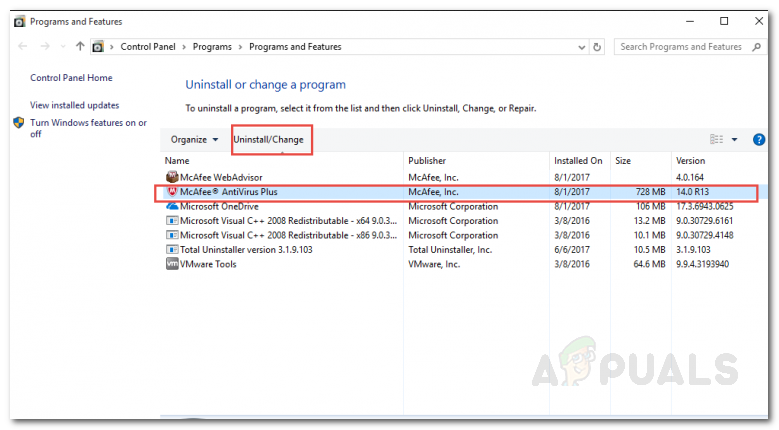
Uninstalling the firewall - Follow the uninstallation prompts to complete the process, then restart your computer and see if the problem is fixed once the next computer startup is finished.
In case the same problem is still occurring, move down to the next potential fix below.
Method 4: Performing a Scan and Repair
As it turns out, this problem can also be caused by a case of desync in the connection with the Battle.Net server. In most cases, this will be facilitated by some type of corrupted data present in the game folders.
If this scenario is applicable, you should be able to resolve the problem by using the Scan & Repair Feature of Battle.Net in order to repair the game that is throwing the ‘Battle.net Error #2‘.
To do this, follow the instructions below:
- Start by ensuring that the Blizzard game you’re having issues with is completely closed.
- Next, open up the Battle.Net app and start by clicking on the Games tab from the menu at the top.
- With the Games tab selected, click on the game you’re trying to repair. Next, move over to the right-hand section of the screen and click on Options > Scan & Repair.
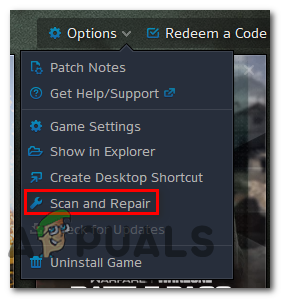
Running a Scan & Repair on Destiny 2 - Once you get to the confirmation prompt, click on Begin Scan and wait for the operation to complete.
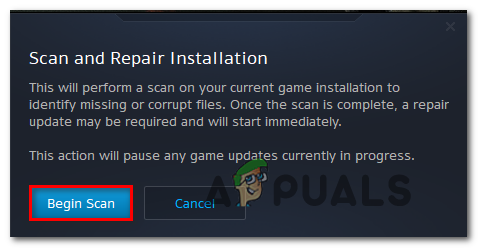
Starting a Scan & Repair procedure using the Battle.Net app - Wait until the operation is complete, then restart your computer and launch the game that was previously causing the ‘Battle.net Error #2‘ error to see if the problem has been resolved.





